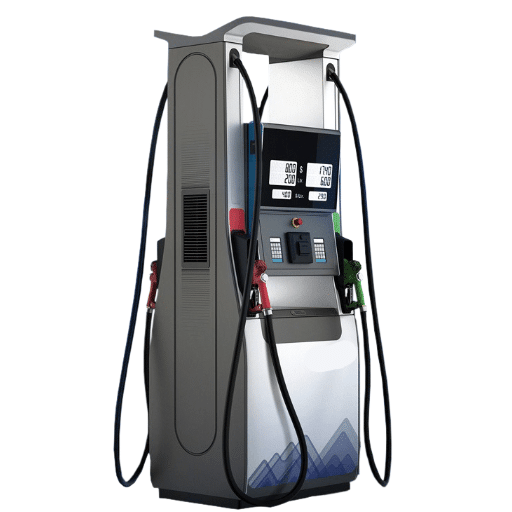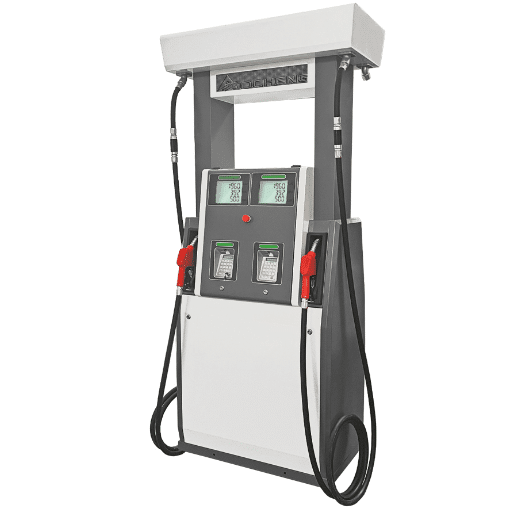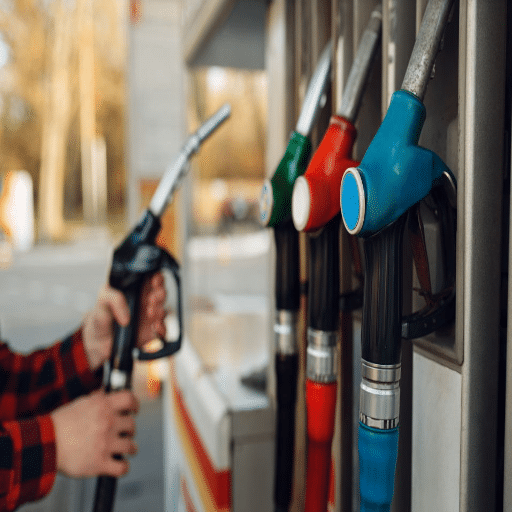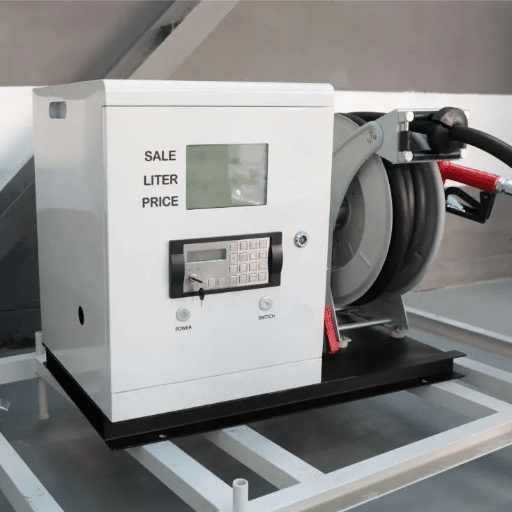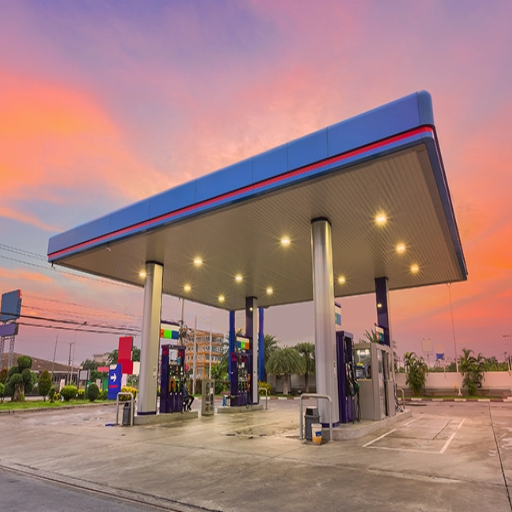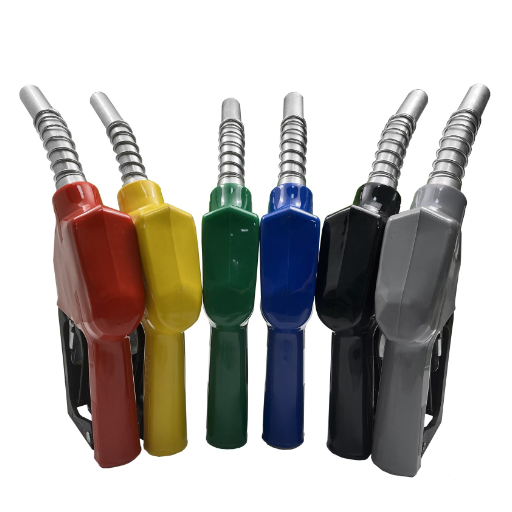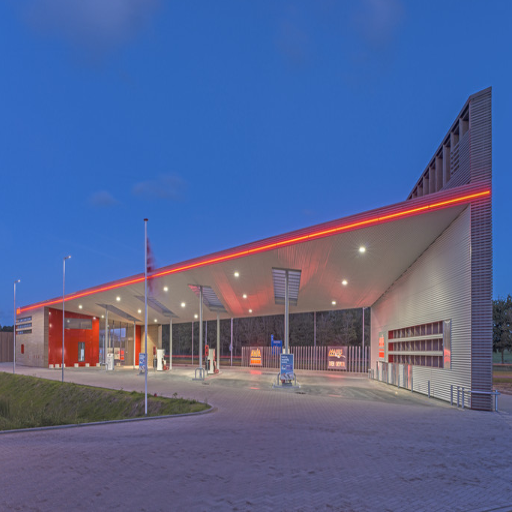Ever wondered what stops your tank from overflowing when you are filling up your car? These days, all pumps have advanced mechanisms that stop automatically when the tank is full. Wondering exactly how this happens? Appreciating the thought and engineering behind this everyday convenience and perhaps avoiding complications at the pump starts with understanding the science and technology behind self-closing mechanisms. We will, in this article, closely observe the automatic shutoff system of gas pumps, let you know what interferes with it on occasion, and provide helpful hints for correctly filling your tank.
How Gas Pumps Work
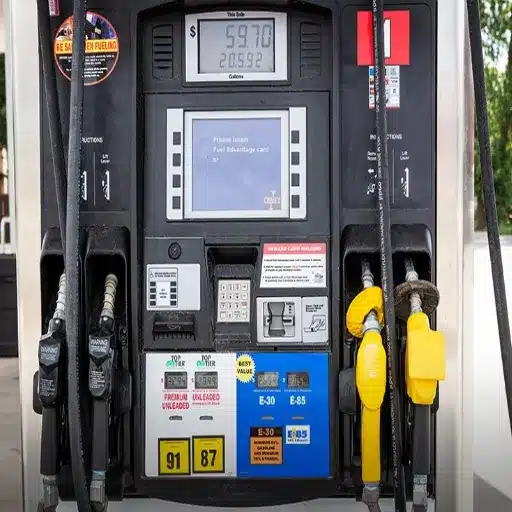
In simpler terms, gas pumps move fuel from underground tanks into your car. Once you start the pump, an electric motor powers the system as it sucks fuel out of the pipe and into the nozzle. The nozzle has a venturi tube and pressure-sensitive elements that control fuel flow.
As the tank is nearly full, fuel would block the air passage through the venturi tube, causing a fall in pressure. This prompts the automatic shutoff feature to activate and prevent further gas flow, averting a gas spill or overfill of the tank. This fairly efficient system, which blends mechanical and pneumatic elements, delivers fuel under safe and precise conditions.
The Fuel System and Its Components
The fuel system of modern vehicles comprises complex interconnected parts that allow efficient delivery of energy to the engine. Among the main components are the fuel tank, fuel pump, fuel lines, fuel injectors, and various sensors for performance regulation. The fuel tank is the primary reservoir, constructed of sturdy corrosion-resistant materials for the safe storage of gasoline or diesel. Fuel pumps vary, but those found in modern-day vehicles employ electricity, which helps pump just enough fuel to the engine to ensure operation under all different operating conditions and maintain uniform pressure within the system.
Fuel lines serve as pipelines for the fuel, carrying fuel from the fuel tank to the engine. The fuel lines that use direct fuel injection are constructed of reinforced materials to withstand high pressures normally between 500-3,000 PSI.
The fuel injectors atomize the fuel into the combustion chamber, maximizing combustion efficiency.
Sensors, like oxygen sensors and mass airflow sensors, always monitor parameters such as the air-fuel ratio and engine load. The data are fed to the engine control unit (ECU), which then ensures that the system dynamically optimizes fuel delivery to maximize performance, minimize emissions, and conserve fuel economy.
Modern Fuel System Innovations
Modern fuel systems include advanced technologies, like direct fuel injection and returnless fuel systems, to make further improvements. Direct injection offers enhanced control of fuel delivery, hence raising power while lowering emissions. Returnless systems cut down on heat buildup in the fuel lines, a problem often found in older designs, thereby boosting efficiency and safety. Together, these components and innovations allow current fuel systems to be the most reliable, responsive, and green designs available.
Understanding the Nozzle Mechanism
It is a vital mechanism in fuel systems, and fuel nozzles are engineered for the atomization of fuel and delivery. It converts liquid fuel into a fine mist to aid optimum combustion within the engine cylinders. With major advancements in fuel nozzle technology, engineers can now create very precise spray patterns, which are instrumental in efficiency and emissions control.
Such a fine mist mixes well with air for perfect combustion and giving low particulate emissions. The latest developments in multi-hole and variable geometry nozzles account for greater adaptation to differing engine conditions and thereby augmenting performance and reducing the losses through fuel wastage.
Incorporating such a design in heavier-damage circumstances also leads to longer levels of usage affected, which otherwise would be considered accelerated wear under high-temperature conditions. There’s also been a marked decrease in emissions, especially NOx, which has been a leading concern through stringent environmental legislation. All these developments represent the concerted efforts toward the utilization of nozzle mechanisms for the future of efficient and sustainable fuel systems.
The Role of the Shut-Off Valve
Ensuring shut-off valves are necessary, with far-reaching significance in assuring safety and operating efficiency of fuel systems through such control determination of fuel movement. These valves are designed to automatically prevent fuel delivery when the tank reaches a certain capacity, preventing any overflow that would allow contamination through improper functioning. Modern shutoff valves are now equipped with advanced sensors and reaction mechanisms that help them be more precise and reliable.
Refinements given toward recent designs of shut-off valves have improved their performance, greatly affecting operational safety and environmental aspects, where the spill causes soil and water contamination. Additionally, these valves are incorporated as part of stringent environmental and safety standards for fuel management from a somewhat sustainable approach.
The improvements associated with the materials and production processes of the shut-off valve have also increased its durability as well as its longevity. The recent valves are mostly made of corrosion-resistant alloys that give them serviceability even under harsh exposure conditions. Improved sealing technology minimizes these from becoming subjected to wear and tear; thus, consistency in performance over a lifetime of use is maintained. Fully emphasizing Fuel systems’ sustainability and operational safety is made possible through these developments in the shut-off valve.
Automatic Shut-Off Mechanism
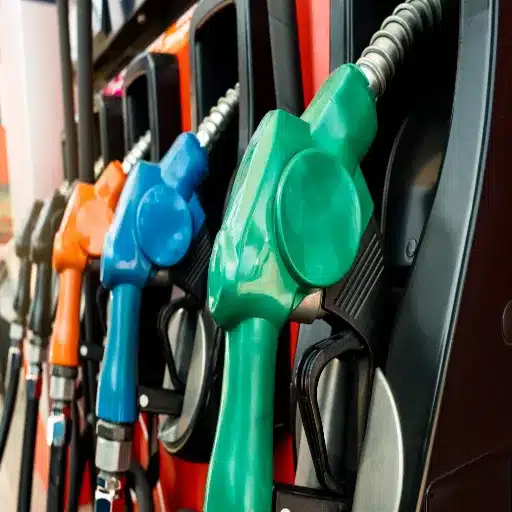
The automatic shut-off mechanism is created to interrupt the flow of fuel or liquid upon the occurrence of certain conditions, say, a particular pressure level or leak detection. The system contributes to safety by stopping the possibility of spills, leaks, or overflows; hence putting the environment at jeopardy and the hazard at stake. In operation, sensors or float valves activate the shut-off process when a predetermined threshold has been crossed. These procedures are reliable and very important for safeguarding operations and ensuring compliance with regulations.
How the Pump Knows When to Stop
Modern pump system American English/American English integration of checkout termination technologies for efficacy and security of operations. Some of these pumps operate with pressure sensors, flow meters, and automated controllers to have a parameter imparted on the spot from parameterization. For instance, pressure sensors detected a state of change in pressure in the system; the pump was stopped when this pressure had reached the required threshold. Likewise, one may have the flow meter on liquid that is set to terminate the operation when said device has measured a preset volume or flow requirements.
Many industrial pumps incorporate liquid level sensors such as float switches or ultrasonic sensors to sense the liquid head in a tank or reservoir. When the liquid level reaches its designated maximum or minimum limits, the maximum or minimum set for the pump will be automatically switched off to avoid overflow, dry running, or damage. Industry data proves that these systems significantly reduce operational downtime and maintenance costs by ensuring accurate shut-off in time.
Digital controllers with programmable logic would be a great support here, with which shut-off conditions may be finely adjusted and then integrated into safety warnings to minimize risks due to leaks or overheating. Some pumps are even going a step further with IoT integration, implementing remote supervising, instant alerts, and control adjustments from just about anywhere, consequently improving reliability as well as control in more daunting systems. The intelligent combination of these mechanisms guarantees optimization of pump operation and maintains prime-level safety methodology.
Factors Influencing Automatic Shut-Off
Several factors influence the automatic stop functioning and efficiency in pumps. Knowing about these factors is essential when choosing or designing systems for any given need.
| Factor | Description | Typical Range/Impact |
|---|---|---|
| Pressure Thresholds | Automatic shut-off parameters are mostly based on pressure thresholds in the pump system. When the pump senses pressure beyond that set by the system, it automatically shuts itself off to avoid damage to the pump. | Industrial pumps: 50 to 300 PSI depending on application |
| Temperature Monitoring | Temperature is another influential factor, especially for temperature-sensitive operations. Excessive heat due to heavy usage or obstruction could lead to system failure or serious safety hazards. | Safe temperature thresholds: 100°F to 250°F in industrial settings |
| Flow Rates and Cavitation | Flow rate monitoring prevents the system from encountering problems such as cavitation, where vapor bubbles are formed and then collapse inside the pump, inflicting severe damage. | Prevents severe pump damage from vapor bubble formation |
| Liquid Levels and Dry Running Protection | Pumps with dry running protection use sensors for detecting liquid levels, shutting them off automatically when levels are too low so as to prevent damage from occurring. | Can prolong pump life by as much as 30% |
| IoT and Remote Monitoring | By adopting IoT technologies, real-time data collection allows for precise adjustments. The pumps with IoT sensors monitor system performance constantly, stopping it whenever irregularities are detected. | 20-25% reduction in system downtime |
By evaluating these factors, engineers and operators shall recognize that the automatic shut-off in pumps makes the working conditions safe and efficient, and adaptable to specific environmental and operational needs.
Safety Features of Gas Pumps
Advanced Safety Technologies
Modern-day gas pumps employ advanced safety features, cast from the goal of smooth functioning and risk minimization while dispensing fuel. One of the most critical safety provisions is the emergency shut-off devices that abruptly stop the flow of fuel when a hose is ruptured or a fire erupts, or during any emergency whatsoever. These systems prevent spills and fires, thereby protecting the consumers and the environment from loss.
Widely fed into installation to capture the harmful fuel vapors emitted during refueling. Industry figures reveal that they reduce vapor emissions by as much as 95%, thereby helping to improve air quality and comply with environmental statutes.
The addition of an overfill protection device further enhances safety by protecting against the filling of the fuel tanks beyond their maximum permissible capacity, thereby reducing the risk of spills and environmental pollution.
More pumps now come equipped with integrated leak detection systems capable of recognizing leaks from underground tanks and pipelines. These systems, in conjunction with real-time alerting, allow corrective action to be taken immediately, lessening fuel loss and environmental damage.
Built into gas pumps to keep static electricity from igniting fuel vapors during refueling operations, thus ensuring the safety of the user.
All these technological advances act together to provide an extremely safe atmosphere in which to discharge precious motor fuel for the benefit of the public and the environment.
Factors Affecting Gas Pump Performance
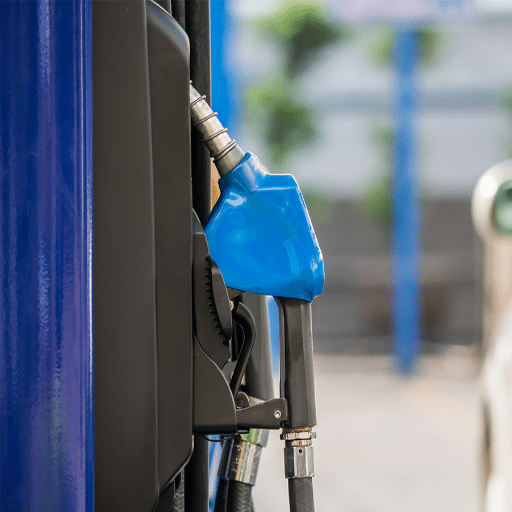
| Factor | Impact on Performance |
|---|---|
| Maintenance and Cleanliness | Any maintenance shall impart sufficient efficiency to the gas pumps. Dirt and debris on the components could lead to deterioration in performance or even cause breakdowns. |
| Temperature and Weather Conditions | High and low temperatures affect fuel measurements and the working of pump components. |
| Fuel Quality | Contaminated or poor-quality fuel may clog pipes and filters and thus reduce the efficiency of the delivery system. |
| Wear and Tear of Components | Gradually, nozzles, hoses, seals, etc., may wear down and start leaking or supplying fuel at a reduced rate. |
| Power Supply Stability | Fluctuation in power supply might hamper the electronic system of the pump, causing its malfunctioning or delay in operations. |
Maintaining the above will guarantee a smooth and efficient operation of the gas pump.
The Importance of Proper Installation at Gas Stations
The right installation makes equipment at the gas station safe, compliant, and efficient to operate. Otherwise, this equipment can present hazards such as fuel leakage, which are serious fire and environmental threats. According to data, fuel leaks through improperly installed underground storage tanks are some of the serious causes of groundwater contamination, threatening public health and ecosystem stability.
Also, ensuring proper alignment and placement of main components such as fuel dispensers and piping systems minimizes chances of mechanical failure and costly maintenance. The next important point is regulatory compliance. Installation must be in accordance with local and federal regulations, including those from bodies like the EPA and OSHA. A well-installed system also reduces the chances of being penalized or shut down during audits or inspections.
Hiring skilled workers for installation is a sure money saver on maintenance, downtime, and safety violations for gas station operators. With good planning and thorough execution, installation can guarantee a gas station runs smoothly while protecting the environment and the community.
Common Issues in Fuel Systems That Affect Shut-Off Mechanisms
These problems are compelling reasons demanding regular inspections, maintenance, and technical progression toward averting dangers that are posed by defective shut-off mechanisms. Modernized advancements like real-time monitoring systems and better component materials are doing their best to cut these problems down to size, protecting businesses and the environment.
Maintenance Tips for Ensuring Your Gas Pump Works Properly
Regular Inspections
Carry out periodic visual and functional inspections on the gas pump system so that any issues may be identified at an early stage. Look for signs of wear and tear: cracks in hoses, loose nozzles, or faulty seals. Regular maintenance inspections reduce costly repairs and downtime associated with equipment failures.
Cleaning Fuel Dispenser
Dust and dirt deposited on fuel dispensers may lead to equipment failure. Clean your dispensers with non-abrasive materials and a suitable cleaning solution. Keeping nozzles, hoses, and all other components free from contaminants helps increase the pump’s service life and maintains its performance level.
Monitor Calibration Levels
A proper calibration of the gas pump is needed to dispense fuel correctly and minimize product loss. Improper calibration causes loss of revenue or dissatisfaction among customers. According to industry standards, recalibration should be undertaken every six months to maintain accuracy, and almost all recent types of equipment are now being provided with automated alerts on recalibration needs.
Upgrade to Modern Technology
Installing the newest technology, such as automated shut-off valves and real-time monitoring systems, further ensures that your gas pump is safer and more reliable. Recent mechanical studies demonstrate that upgrading materials for critical components reduces the likelihood of leaks by an astounding 40%. These improvements also provide a guarantee to comply with safety regulations and long-term cost savings.
Check Fuel Quality and Filters
Low-grade fuel could bring contaminants that clog your pump system and reduce its efficiency. Change the fuel filters at least once every three months to keep away from the problem and make frequent checks on fuel quality. Experts recommend using certified testing kits or even third-party inspection agencies to certify that your fuel supply falls within industry standards.
Train Your Staff on Proper Usage
Human error forms a substantial part of the damage to gas pumps. Making sure your employees undergo proper training in pump operation and upkeep prevents misuse and encourages a sense of responsibility among them.
Adhering to this maintenance regimen, coupled with modern technological applications, would go a long way in ensuring the efficiency, safety, and sustainability of the gas pump for years ahead.
Refueling Process at Gas Stations
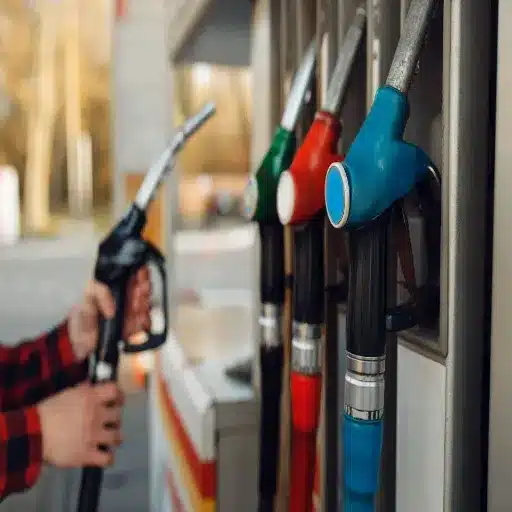
Refuelling is one of the most straightforward and efficient things at a gas station. So to refuel, find a good spot next to the pump and make sure the engine is off. Open the fuel cap, making sure the right fuel grade is picked for the requirements of the car. The instructions on the pump should be followed; insert your form of payment, place the nozzle securely into the fuel tank, squeeze, and hold the handle to fill up; release it once the pump shuts off on its own. Pull out the nozzle, replace the fuel cap, make sure it is sealed, and you’re ready to go. Always follow safety procedures, never make or answer bets on the mobile phone near a pump, and keep away from open flames.
Steps to Properly Use a Gas Pump
Locate the Correct Fuel Station
You must be sure to be at a fuel station that really dispenses the grade of fuel needed for your vehicle. Check the user manual for the vehicle or any label on the inside of your fuel door to see which fuel type is recommended for it (regular, mid-grade, premium, or diesel). Using the incorrect fuel for your vehicle can damage its engine or reduce efficiency.
Safety Preparation
Ensure the vehicle is turned off before refueling to avoid accidents. At all times, do not smoke or light matches/fireworks around the pump. Static electricity can be dangerous. It is better to touch some metal part of the car away from the nozzle to discharge any static before starting to refuel.
Payment Process
The majority of fuel stations usually accept diverse payment methods, including credit/debit cards or mobile payment apps. Upon inserting your card into the payment terminal, follow the onscreen instructions. You might have the option to prepay once inside the convenience store.
Select the Correct Fuel Grade
Choose the fuel according to the right grade that your vehicle should use. Fuel stations have (at times) three or more options and differ primarily in octane ratings. Studies find that not all cars need to use premium fuel, and it offers no noticeable benefit unless it is called for by the manufacturer.
Refueling the Vehicle
Insert the nozzle into the fuel tank completely, so as not to cause any spills. Squeeze and hold the handle to release fuel. The present-day pumps automatically stop upon filling up the tank. Topping off the tank should be avoided as it could cause overflow and damage the vapor recovery system of your car.
Finishing Up
Remove the fuel nozzle and wipe off any drips. Put the fuel cap on and then tighten it properly. A loose or missing fuel cap may turn on the “check engine” light or cause fuel evaporation, thereby affecting the vehicle’s performance.
Fuel Efficiency and Environmental Considerations
Keep in mind the impact of fuel. Gasoline fumes pollute the air, so always ensure your gas cap is tightly closed to cut emissions. Some vehicles may also require certain fuel-efficient practices, such as minimizing excessive idling and keeping tires properly inflated, which can nowadays save about 3 percent of fuel consumption, according to energy conservation research.
By following these detailed steps, you can ensure safe and efficient refueling while protecting both your vehicle and the environment.
Safety Measures at the Pump
Critical Safety Guidelines
Maintaining proper refueling and safety precautions means preserving ourselves from injury and further environmental damage. Always check that the engine is turned off before pumping gas, because running engines might become a big hazard for fire or explosion. The second advice from fire experts says that static buildup is an important consideration; touch a metal part of your car first before starting to fuel up, so as to dissipate static and minimize the risk of ignition.
- No smoking or open flames: Gasoline vapors would explode if given a spark, however small, by opening electronic devices near the pump
- Avoid overfilling: Never overflow your tank – spilling gasoline creates both fire and environmental hazards
- Secure children and pets: Have those attending an important role inside the vehicle secured so as not to become a distraction
- Environmental impact: According to the Environmental Protection Agency, spilled gasoline contributes to ground-level ozone formation and water contamination
Education and safety, the two, promise prosperity for an individual and the rest at the pumps.
The Technology Behind Automatic Shut-Off Mechanisms
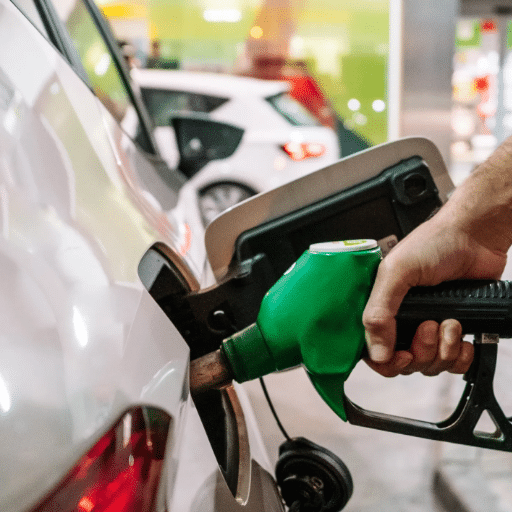
How Automatic Shut-Off Protects Against Overfilling
One important feature of modern fuel dispensers to protect against overfilling and spills in fuel is the automatic shut-off system. This system uses a sensor mechanism in the fuel nozzle. When the fuel tank is filled, the rise of the fuel level prevents the vent on the nozzle from functioning, thus changing the pressure inside the system. The change in pressure evokes the automatic block in the discharge of fuels by the nozzle.
This technology prevents spills from occurring and, at the same time, prevents large amounts of unpleasant volatile organic compounds (VOCs) from entering the atmosphere and provides for environmental legislation compliance. The design of the vehicle fleet further improves the effectiveness of this system, with many modern fuel tanks sculpted to indicate impending fullness. This, together with the shut-off feature, presents the user with nearly courtesy, safe refilling while making the environment a better place.
Core Technology Explanation
At its core, this technology can be described as simple yet effective. The nozzle, when filling the vehicle with fuel, monitors changes in the airflow and pressure within the tank; if it senses the tank is almost full, the rising fuel level blocks the vent tube of the nozzle, causing a pressure change and signaling it to shut off dispensing fuel automatically. Thus, this procedure maintains accuracy and prevents too much fuel spillage, making the refueling procedure safer.
What to Do If Your Gas Pump Doesn’t Shut Off Automatically
Emergency Response Steps
In the rare event that your gas pump does not shut off automatically, fast and efficient action must be taken:
- Release the trigger immediately – Stop the flow of fuel to prevent further spills
- Inspect for damage – Look for any blockage that might hinder the nozzle from functioning correctly
- Clean up spills – If you witness spills on the ground or on your vehicle, clean them up fast with good absorbents
- Wait before starting – Do not start your car until the area has been cleared of flammable fumes
- Report the issue – Notify a gas station attendant or manager so that the pump can be inspected and repaired if necessary
- Prevention – To avoid this occurrence in the future, avoid filling your tank all the way to the top, as this can sometimes cause the sensors to malfunction
Understanding for Better Safety
The automatic shut-off mechanism in gas pumps represents a perfect blend of mechanical engineering and safety innovation. By understanding how these systems work – from pressure sensors to vapor recovery – we can better appreciate the technology that keeps us safe during refueling. Regular maintenance, proper installation, and awareness of safety protocols ensure these systems continue to protect both consumers and the environment. Whether you’re a gas station operator or a regular driver, this knowledge helps you make informed decisions and respond appropriately when issues arise.
Reference Sources
Frequently Asked Questions (FAQs)
How Does the Gas Pump Know When to Shut Off?
The gas pump employs a mechanism that detects a fuel level in the tank rising to a certain point. The fuel, while entering the tank, passes through a venturi tube setup against a flow of air. When the tank becomes full, pressure builds up, thus signaling the pump to stop the flow of gasoline.
What is the Automatic Shut-Off Device in Gasoline Pumps?
The automatic shut-off device involves a gas nozzle with a small tube located within. This tube detects a rising fuel level in the tank, which, upon reaching a certain height, creates a vacuum to trigger the shut-off valve. The flow of gasoline is thereby stopped to prevent overfilling and releasing fuel.
Can You Top up the Gas Tank After the Pump Shuts Off?
Generally, topping off the gas tank after the pump has shut off is not recommended. Pumping gasoline after that could spill fuel everywhere and might cause some damage to the fuel system. The pump knows when to shut off for a reason, so when used correctly, it should ensure safe filling of the tank without overfill.
How Does the Gas Pump Work in the Fueling Process?
Inside the gas pump, gasoline is drawn from the storage tank before being pushed up from the pump nozzle. As the fuel flows through, it runs through a venturi tube that creates the vacuum. This vacuum is critical in detecting fuel levels inside the tank and ensuring the pump knows when to stop pumping gas.
How Do Gas Pump Nozzles Prevent Fuel from Making a Mess?
Gas pump nozzles include a shut-off valve that stops the flow of fuel once the tank is full. The nozzle has a small hole that detects a change in air pressure as the fuel level rises inside the tank. This shutdown stops the spilling of fuel immediately.
Why Do Some Gas Pumps Shut Off Before the Tank Is Full?
A common reason for the gas pump shutting off before the tank is full can be a fault. An incorrect positioning of the fuel nozzle inside the tank can lead to a premature shutdown. In cases when one holds the gas nozzle in an inclined manner, fuel might back up into the nozzle and trigger the shut-off prematurely, leaving you thinking the tank is full when it really is not.
What Differences Do Changes in Fuel Type Make During Pumping?
The pumping of fuels that differ in viscosity and density will also affect the pumping process accordingly. The pump mechanism might work differently whether you are using gasoline, diesel, or any other kind of fuel. The way one type of fuel passes through the pump and the nozzle differs from another, thus probably affecting the means by which the pump knows when to shut off.
Are Gas Pumps Safe to Use with Malfunctioning Nozzles?
Using gas pumps with malfunctioning nozzles might be hazardous. If the nozzle does not shut off, it can overfill and spill fuel, which, in turn, poses a fire hazard. Anyone with a malfunctioning nozzle must be reported immediately to the attendant at the petrol station for everyone’s safety during refueling.

